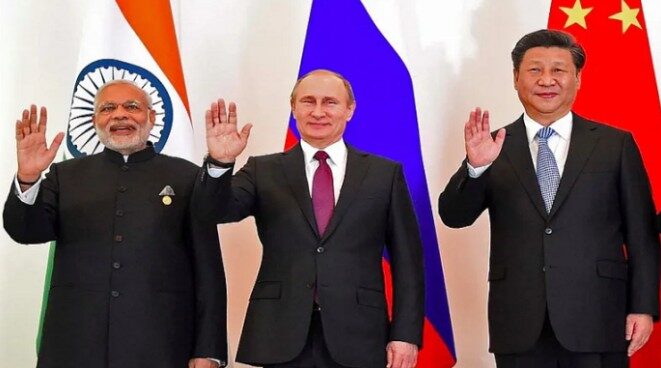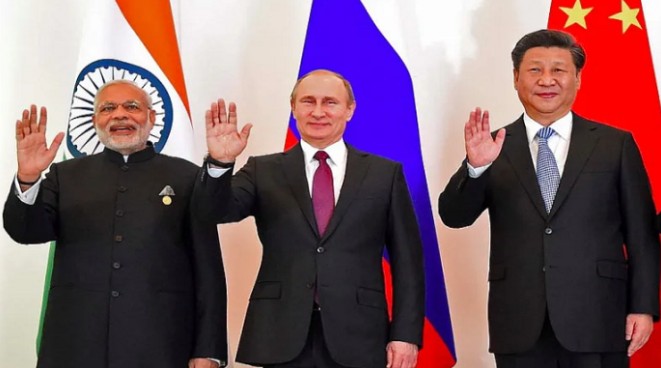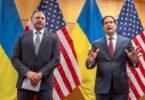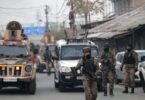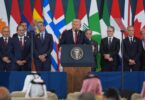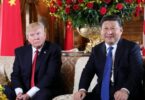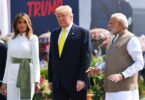RIC could have included Iran for obvious advantages, but that is not possible because India drastically cut off oil imports from Iran during Trump’s first presidency and Iran has strongly condemned the Indian media for fake and fabricated coverage of the recent Iran-Israel war (
https://clarionindia.net/iran-rebukes-indian-media-for-biased-iran-israel-war-coverage-urges-journalistic-integrity/).
The US undermined India’s LCA Tejas program by delaying supply of GE’s F-404 aero-engines. But a stark warning is evident from Microsoft Corporation suspending India’s ‘Nayara Energy’ access to tools, data, and licensed software (
https://www.businesstoday.in/industry/story/now-think-if-it-was-a-hot-war-situation-ex-army-officers-wake-up-call-as-microsoft-blocks-nayara-486795-2025-07-29#google_vignette), implications of which in war have been indicated by veteran Colonel Hunny Bakshi. For that matter, India’s must acknowledge potential of China’s cyber prowess (
https://www.spsmai.com/experts-speak/?id=1598&q=Chinas-Damning-Cyber-Prowess). Ironically, our dependence on Chinese electronic components and machinery has placed us in crosshairs of China’s cyber spy-sabotage network (
https://www.spsmai.com/experts-speak/?id=1582&q=Chinas-Cyber-Spy-Sabotage-Network).
Truth is hard to swallow but it is about time we look ourselves hard in the mirror. We are in this state because we have not done so. Our slogans of self-sufficiency are patchy in every segment. More so because we haven’t defined a national security strategy (NSS) 78 years after independence. The CDS says we don’t need a written NSS, but it is not a poem that can be memorized. Most of our national hierarchy, if not all, views national security as military security, whereas, military security is just one part. Lack of NSS is one reason why despite having third largest global RRE reserves, we haven’t yet begun production of RREs (
https://www.thestrategicperspective.org/op-eds/weaponizing-rare-earth-elements/).
Ashley Tellis penned decades ago “India getting subjected to terrorism suits many”, without mentioning it suits the US also. Going gaga over America branding TRF a global terrorist organization, fails to acknowledge the Pahalgam massacre was with CIA’s knowledge or greenlighted by them (
https://www.thecitizen.in/opinion/the-trf-chirrup-1163974). Friendships shouldn’t imply abdication. India-Israel friendship is decades old, but Israel branded Lashkar-e-Taiba (LeT) a terrorist organization only after Hamas attacked Israel in October 2023. Israeli aircraft landing in Pakistan indicates Israeli nukes likely stored in Pakistan – same as America’s. The US-Isreal bond is much stronger than India-Israel, and the US has sinister designs for India/South Asia. With Israel weaponizing hunger in Gaza, France, the UK and Canada have come out in open support of Palestine. But India is mum – have we forgotten British colonialism exacerbated famine conditions in India, killing thousands through starvation?
Decisions related to national security cannot be based on ‘political’ considerations and vote-bank considerations. Same should be the case in defence procurements, rather than taking cover behind Army/Navy/Air Force want this or that; while decisions are made by the bureaucracy on which the polity depends. Starlink cover in India, with attendant security implications, is despite Jio and Bharati Airtel in the race. NavIC (Navigation with India Constellation) was launched only to provide “regional” cover. But today only four of its seven planned satellites are operational. Why did we not plan our own GPS all these years when China’s BeiDou has global coverage – ISRO only needed directions and the funds.
The sponsored media response to Trump’s tariffs barrage on India is “
it could be worse” (sic). Both the US and China are bullies, who need to be stood up to and looked into the eye. China maintains the border problem should be kept separate from bilateral relations – no matter how much we try to paint otherwise to impress the public at home. Doesn’t the US need India more for its Indo-Pacific plans and huge market than India needing the US? We need to see through every foreign move and its long-term implications to prevent reacting to situations when the occur. Nepal’s Prime Minister KP Sharama Oli is visiting India first time in his premiership, 10 months after he visited China. His visit is in the backdrop of calls for return of monarchy in Nepal (engineered by foreign intelligence) which had no chance of succeeding. Oli will promote the China-Nepal-India Economic Corridor (CNIEC), proposed by Beijing in 2018. India will naturally not join China’s BRI, but China will be ready to use India’s road-rail connectivity via Nepal to Bangladesh where it built the largest submarine base in Asia. The CNIEC needs to be viewed together with China establishing an airbase in northern Bangladesh and its implications for India’s northeast.
Finally, India will need to navigate contentious waters for the coming 15-20 years and things may get worse. We need to invest in full-scale defence modernisation that remains patchy, as well as prepare for external shocks to our economy. The two-day discussion in Parliament over Operation ‘Sindoor’ indicates we continue to deflect ground realities – truth lies between the mud-slinging from both sides. If we don’t adhere to ‘India First’ instead of focussing on political personalities, we are in for bad times. There is no reason why India should hesitate from RIC meetings – unless the political hierarchy fears America. Why is RIC treated different from the Quad?
The author is an Indian Army veteran. Views expressed are personal.
